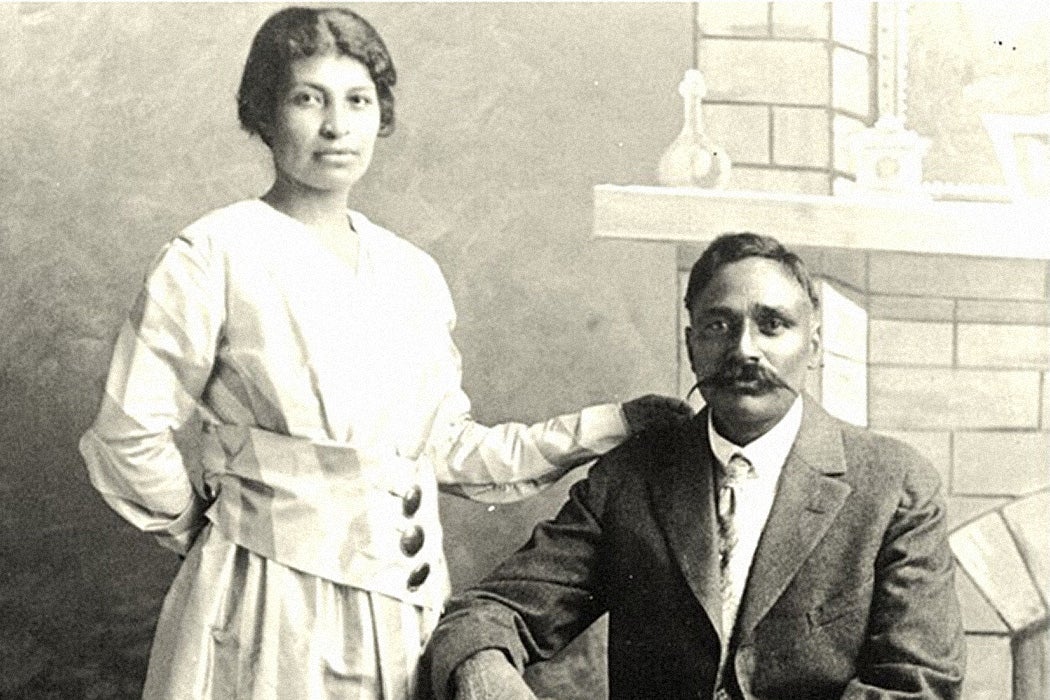“Gurbachen? Oh, you mean Bacho.”
“Kishen? That’s Domingo.”
Running into this incongruous mix of Punjabi and Hispanic names wasn’t unusual for historian and anthropologist Karen Leonard while she was conducting her ground-breaking research in rural California in the 1980s. After all, she was there to meet a cross-cultural community that represents “a colorful chapter in America’s family and ethnic history,” as she and her collaborator, cultural anthropologist Bruce LaBrack, put it.
The so-called Mexican-Hindus of California have a unique story, which is split between California’s Sacramento Valley in the north and the Imperial Valley in the south. Their community began in the 1910s, with migrant workers originally from the Indian province of Punjab.
“These men did not marry until years after arriving in America, until the immigration laws made it impossible to bring their families from India,” explain LaBrack and Leonard. Thus, these Punjabi agricultural laborers—already in their thirties or forties and organized into tightly-knit social groups of two-to-five men—had to turn to the local population to find wives.
Their brides could be much younger—in their teens or twenties. Hailing from Mexico and the American Southwest, the women came from families that had originally come to California in search of farm work or to escape the Mexican Revolution and the unstable situation in border regions.
“Frequently, eligible women were picking cotton in the fields farmed by the men and legal barriers to marriage were not raised. The women offered domesticity, a housekeeper and cook for the husband and his [business] partners,” LaBrack and Leonard report.
The intermarriage transformed Punjabi bachelor enclaves into a much more womanly space.
“In contrast to the common stereotype of the patriarchal Mexican family, these Hispanic female-centered kinship groups presented challenges to the Punjabi men,” write LaBrack and Leonard.
Notably, Punjabi men from the same group of partners tended to marry sets of sisters or female relatives, so “[k]inship and economic ties reinforced each other” in the community. Since many brides “were without male supporters”—for example, as daughters of single parents or widows themselves—they would bring their own sisters and mothers into their new households.
On the other hand, Punjabi men who remained single might also stay with their married partners “for years, helping with the cooking and telling the children stories about the Punjab.”
One key way that families were connected was through the compadrazgo system, which originates in Hispanic Catholicism and refers to the ties between birth parents and baptismal godparents.
“For the men the compadrazgo system served to extend or strengthen Punjabi kin networks and to exert some influence on the new generation of mixed offspring,” write LaBrack and Leonard.
Even though “[s]uch a relationship has no direct parallel in Punjabi culture, where it would be inappropriate to draw upon ‘outsiders’ or non-kin” to be so involved in raising children, the system was easily adapted to suit the new, inter-ethnic households’ needs.
Though the Punjabi men were often dubbed “Hindus,” they could, in fact, be Sikhs or Muslims, too. Nonetheless, they were willing to serve as godfathers, and this was accepted by the Catholic priests.
“Religious distinctions important in India were ignored,” add LaBrack and Leonard. For example, Muslim men might stand in as godfathers for the children of Sikhs.
“Along with the Spanish padrino [godfather] and madrina [godmother], the English term ‘uncle’ was used, which was understood in California Mexican-Hindu circles to mean ‘any man from my father’s village,’” LaBrack reports based on interview data. “This is a reciprocal extension of the Punjabi idea of ‘daughters of the village,’ in which all females from a natal village were somehow nieces of the older men of the village.”
Yet this phenomenon of mixed marriages survived just one generation.
In addition to the risk of divorce due to cross-cultural conflicts, Mexican-Hindu families were also imperiled when Indian immigrants to the United States gained the right to naturalize in 1946.
“The men now could own land, secure passports, travel to India, and bring over relatives from India, itself newly independent in 1947,” write LaBrack and Leonard.
This access to citizenship rights and a resurgence of pride in India coincided with the difficult transition to adulthood of most Mexican-Hindu children. In effect, the fathers could choose relatives in India over their Mexican-Hindu families in the US, and some did.
The next generation also started to see their ethnicity differently—especially as they didn’t marry among themselves, generally choosing Mexican American or white American spouses. In addition, the post-war arrival of new Punjabi immigrants in the Sacramento Valley—especially in the Yuba City area—prompted a hostile backlash from more established groups there.
“The prejudice stimulated locally by the rapid growth of this rural Asian Indian group led some Mexican-Hindus to identify more strongly as Mexicans,” LaBrack and Leonard note, prompting them to change their names to more Mexican-inflected monikers, “or at least to talk about the superiority of the ‘old Hindus’ to the new immigrants.”
Weekly Newsletter
In southern California, however, “Mexican-Hindu descendants in the Imperial Valley claim the title ‘Hindu’ proudly,” to distinguish themselves from the large Mexican population there. Unlike their counterparts in the Sacramento Valley, “they lack a sizable new reference group from India to cause ambivalence or to challenge their claim to be ‘Hindus.’”
Today, California’s Mexican-Hindu community doesn’t form a discrete ethnic group and can no longer be said to be a “distinctive and cohesive” population. Still, according to LaBrack and Leonard, the descendants of the pioneer Punjabi-Mexican couples form “a cohort of peers whose shared experiences link them even today throughout the state.”





